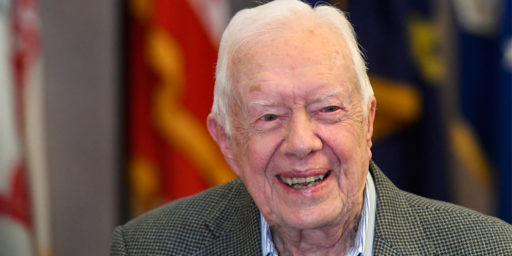Matching the Tooth to the Tail
Austin Bay published an op-ed in the Houston Chronicle the other day which is attracting a certain amount of attention. In the op-ed Col. Bay proposes that we increase the size of our active duty Army to 650,000, noting that in 1990 the active duty strength of the U. S. Army was 750,000 and that the population of the country has increased since then:
Earlier this month, the Los Angeles Times featured a discussion between Phil Carter, a Los Angeles attorney who served with the 101st Airborne in Iraq, and me on military-related issues.
Carter and I agreed that a 650,000-soldier U.S. Army is a more realistic figure given personnel demands and expected commitments. Carter argued that “America can no longer afford to run its steak-and-lobster national security strategy on a McDonald’s budget.”
I agreed with his assessment, but pointed out that the personnel issue has another subtle dimension that stretches U.S. military personnel.
America expects its military to win its wars, which means having war-fighters proficient with weaponry ranging from bayonets to smart bombs. But America also expects its military to competently use a trowel, auditing software and a doctor’s bag, and occasionally provide legal, political and investment advice. That’s been the military’s burden since 1992, when the Era of Peacekeeping replaced the Cold War. Sept. 11 replaced the Era of Peacekeeping with a global war over the conditions of modernity, where the trowels and investment advice are often as important as combat skills.
We need more troops. That will mean spending tax dollars — but with 300 million people, we have the recruiting pool to support a 650,000-soldier Army. We also need to get the skills of U.S. government civilian agencies into the field. That will take tax dollars and focused political leadership.
Col. Bay knows infinitely more about this subject than I do or, indeed, than I plan to learn. I have to wonder, however, at the actual numbers being suggested.
Using a baseline of 1990 (as Col. Bay does) has the tooth-to-tail ratio risen or fallen? How has the ratio changed when the number of civilian contractors performing tasks which, in 1990, would have been performed by regular service troops is taken into account? How much would the total cost be to increase the active duty forces to the target size at the present tooth-to-tail ratio, all factors considered, out the door?
I don’t know the answer to any of these questions but I’d sure like to know them.
I’d phrase my own druthers somewhat differently than either Col. Bay has or than I’ve seen others do: I think we should adjust the number of commitments for our military to what we’re willing to pay for. I recognize that’s begging the question but I think it’s the best I can do.



